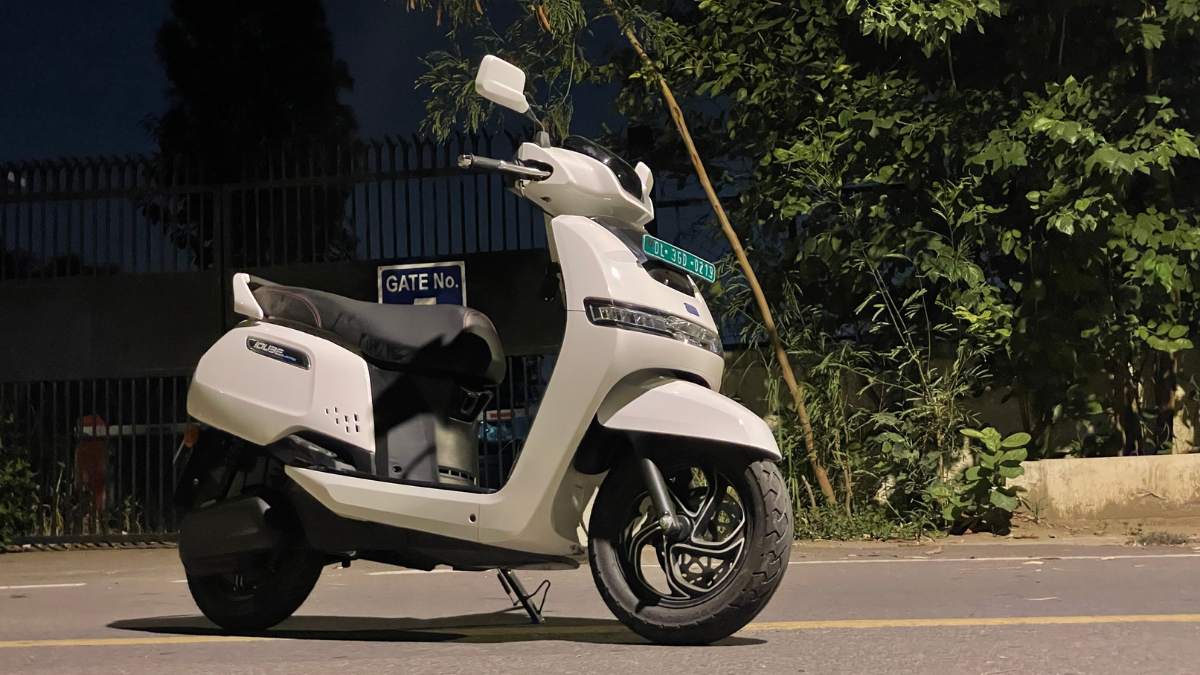In other words, TVS iQube along with a handful of other e-scooters has seen it all and waded their way through the tough time. The challenge ahead is steep from the Ola Electric and Simple Energy. Claims about range and specifications from the entrants are tall, but an outright comparison can wait at the moment.
With the context laid, the question arises: Should you buy an iQube in the first place? The iQube is yet to be available PAN-India and the price varies depending on the EV Policy of the state you reside if it has one. iQube is the most affordable in Delhi at Rs 1 lakh (on-road) and highest in Kochi at Rs 1.24 lakh (available in 6 cities). So, choosing an iQube over a 125-cc petrol scooter may not look appealing at the outset. Ntorq 125, for instance, will set you back by up to Rs 1 lakh.
Living with the iQube is far less harsh on the pocket than a conventional scooter. Over the period of 14 days I lived with the iQube, a single recharge cost Rs 16-18 on average. Ridden in ECO mode, the iQube could up to 80 kilometres. This effectively meant 0.25 paise/kilometres. Additionally, the hassles of monthly servicing and periodic oil charges of petrol-powered scooters aren’t here.

Economical parallels being drawn, one has to live with 52-55 kmph in ECO mode, which to me didn’t feel slow at all in peak city traffic. The 4.4 kW motor, when switched to POWER mode (can be switched on the fly) allows you to hit 80 kmph. This is at expense of range, which drops to 60 kilometres for a single charge.
While the discussion is around the range, what may annoy you in the charging time. TVS iQube isn’t compatible with a fast charger yet, and the IP67-rated, non-replaceable battery takes at least 6 hours to full charge once drained out. The company will install a complimentary AC charging socket at your desired place.
Electric scooters are altering the usual feel of peak torque, max power and sweet spot of conventional IC engines. Twist the throttle, and the rush of instantaneous torque pushes you back, and by the time the torque hits the apex and flattens, max power kicks in. In other words, EVs in general, when driven offer the rush throughout the revs band. What’s also common is the different levels of regenerative braking. Draw analogue of engine braking of an IC-powered two-wheeler, regenerative braking helps in slowing down when throttle is released and at the same time replenishes the battery.

Keeping the mechanism aside, the iQube tips at 118 kilos, which makes it easily manageable. The build quality is consistent and thankfully looks are not straight out of a Sci-Fi movie. LED lights upfront and at the rear offer good visibility in dark. The TFT screen gets connected features and also helps with turn-by-turn navigation.
That being said, switching on the iQube can get a little tricky. Plug the key, the iQube asks to close the throttle which may confuse the rider in the beginning. A slight twist of the throttle and release, and the high-pitched beep stops. Push the modes button, pull the left brake lever and gently twist again to roll the e-scooter. Easier said than done, it took me a while getting used to.
Electric scooters can be really fun to ride and economical at the same time. Don’t expect any kind of emotive experience though. Conceding the fact Ola and Simple’s e-scooters are far superior on paper, collectively, the focus should be on building momentum for electric vehicles and not cannibalizing.

